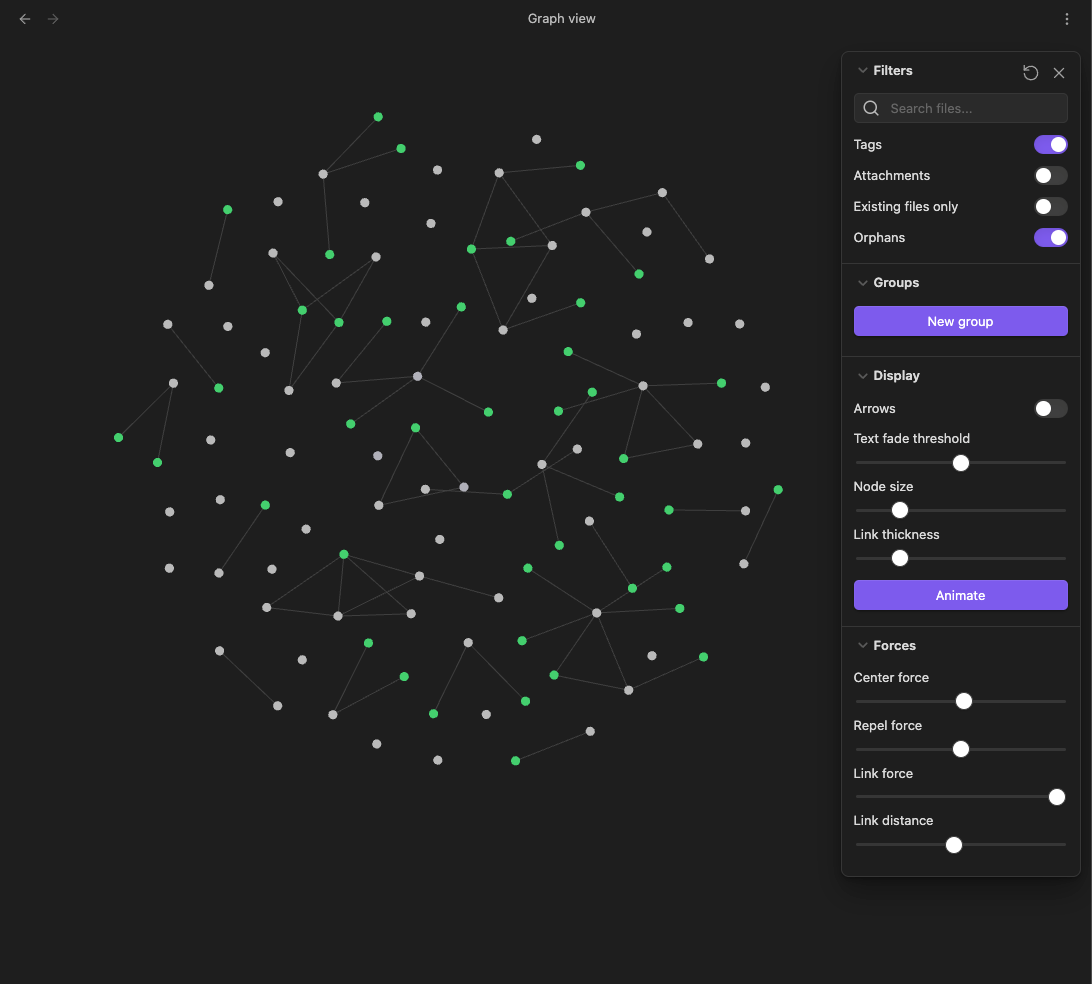logs: how I research
A set of logs and misc. thoughts on how I manage my research (tooling, processes, etc.). Not much of interest here, yet—I'm just logging thoughts and the changes that I make to my process. Somebody it will be a "system."
Obsidian quick start
For about a year, I've been using the Zettelkasten system for personal knowledge management. I've had a decent workflow using "The Archive," which is indeed "nible, calm, plain.txt," as their page says. But I couldn't get a good workflow with my phone, and I couldn't resist exploring this graph that Obsidian provides. I fear that I need a graph only because I don't fully understand how to do Zettelkasten correcly, but here I am. The phone problem: I use Drafts to "quick capture" items, and in theory I could create Draft actions to push the note wherever it needs to go (this or that zettelkasten archive, as a draft for the blog, etc.). But I never got there, and then I tried Obsidian on the phone. After highlighting text on a webpage, I can click once to the right to the "share" menu and click Obsidian. The app has a "daily" file that I can drop this text into with one click. Then, at then end of the day, I can parse these items out into note cards or zettelkasten items. For this simplicity, Obsidian looks interesting, and I'm going to play with it for a while. Of course, the beauty of a .txt-backed system is that I simply moved my .md files into a new directory, and they are available to Obsidian (I decided to use iCloud sync).
Now, let's look at that graph. Actually, I don't have much time—for now, just look at that beauty below. This is a graph of how all my notes are connected:

Lots of goodies there. I'm especially interested in that "group" feature.
2022-11-05 13:40:24: found a lost essay!
Wow, I just found an essay that I thought I had lost. A couple lessons learned:
- Don't use text editors that manage your files. Fortunately, I had exported this from Ulysses and dumped it in a place that I could find it, but there was this whole thing with two accounts for Ulysses, then not being able to get into one, and not being able to find and restore backups because they put them in some weird spot that didn't come over in a machine migration, etc. The rules: 1) you have a pile of text files, which represent the source; 2) those files can be edited by any number of programs; 3) if that program doesn't edit the file directly, don't use that program (I suppose it's okay if there's some intermediary storage step, but the file has to be saved immediately—you can't hope that someday you'll export things and it will be good. That's fine for your kitchen recipes, not for your writing.)
- Document and know your process well; own it. Ambiguity around a workflow so critical is negligent.
- Manually index the most important things. Automation is good and all, but in this case, had I put this critical chunk of writing in my index, I would have been able to use it earlier in the writing process. I now have one place where I can go to track down all the important things (and remind me of what those important things are).
2022-10-19 01:45:25 Alfred workflow for Zettelkasten
Wrote an Alfred workflow for creating zettelkasten entries. I can open Alfred, type zettel [directory], and the script creates a file in the right zettelkasten, then opens it in my text editor. I can then git commit it and git push it to the remote repo. Someday we'll have tags for publishing these in, e.g., microblog format.